Components
Let's dive inside the box, once fully assembled, and think about the components that QPC has picked for us to use.
The D.Vine takes advantages of one of last year’s most exciting arrivals – the desktop Pentium M. Quiet PC has allied Aopen’s excellent
i915GMm-HFS motherboard, the best Pentium M mainboard currently available, with a 1.7GHz Pentium M 735. This may seem like a somewhat meagre choice of processor considering the 2.26GHz frequency of the flagship Pentium M 780. But Quiet PC also gives full instructions on how to overclock the 1.7GHz to the same level, and we found it would happily run at 2.26GHz for days on end. Considering the huge premium on a true Pentium M 780 – as much as a dual-core Pentium 4 or Athlon 64 – an overclocked 735 is a much more cost-effective platform.
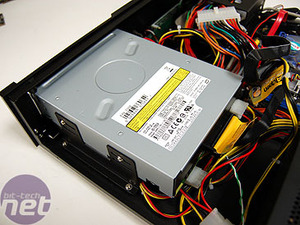
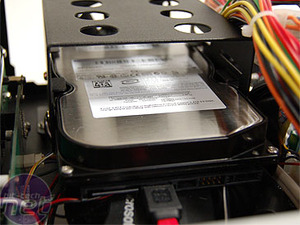
Another pair of discerning choices are the hard disk and optical drive. Samsung’s hard disks have long been a favourite amongst media PC builders, as they’ve held the low-noise crown for a number of years. The Spinpoint P120S is even quieter than previous generations, and also offers a cutting-edge 125GB per platter in this 250GB edition. This makes for superb performance, and is also a decent size for a system destined for PVR duties. The NEC ND-3550A DVD writer is a top performer as well, offering 16x DVD+R and -R, 8x dual-layer DVD+R and 6x dual-layer DVD-R writing. However, it has recently been superseded by the ND-4550A, which Quiet PC says it is considering shipping instead in the future.
Although the Corsair Value Select PC4200 DDR2 memory is not state-of-the-art overclocking memory either, it’s more than sufficient to keep the Pentium M’s FSB supplied, which is still only 533MHz even when overclocked. It would have been a pointless waste to include premium DIMMs.
Since this isn’t a PC intended for gaming, Quiet PC has stuck with the Aopen motherboard’s integrated Intel GMA900 graphics. This will be fine for general-purpose duties, but won’t be able to run games much more recent than Unreal Tournament 2004. It offers the usual VGA and DVI outputs, but also adds S-Video and component YPbPr for HDTV. We didn’t have a high definition screen handy for testing, but we did have a problem with the S-Video output. Although it worked fine during initial bootup, Windows refused to detect our TV unless we set up a dual-monitor system with another VGA or DVI-connected panel. Quiet PC told us that they hadn’t encountered this problem before, but we’ve found discussions of similar situations on Web forums. It’s one of a number of bugs related to Intel’s graphics drivers, another being that you have to install them with your regional settings configured as US English otherwise the GMA applet won’t load properly.
Sadly, upgrading the graphics won’t be so easy. Although a 16x PCI Express slot is available on the motherboard, the chassis is low profile. Not only will you need a low-profile graphics card, you’ll also need the custom backplate to go with it, as you will for any other peripheral adapter. Quiet PC does supply a pair of these for the Black Gold digital TV tuners, although we found installing them was still a bit of a squeeze.
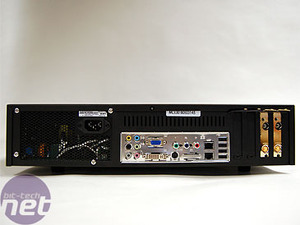
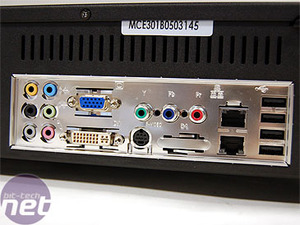
The Aopen i915GMm-HFS offers quite a plethora of ports at the back. As well as the extensive array of graphics outputs, there’s the requisite six audio jacks (two of which can be turned into S/PDIF using conversion adapters), two Gigabit Ethernet LAN ports, and four USB. A separate backplate is required to add a PS/2 keyboard port, which is supplied in the box. However, you may not want to use many of these ports once the system is up and running. Quiet PC has included all the instructions you need to enable using the system with just the MCE IR remote, including putting it into standby and waking it up at the push of a button.
The system sports dual DVB-T tuners. This allows you to watch a digital Freeview programme and record another. The TV tuners are by Black Gold, which are generally considered to be the best DVB-T tuners out there.





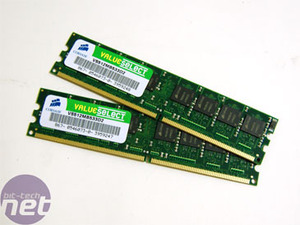
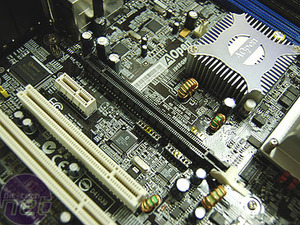



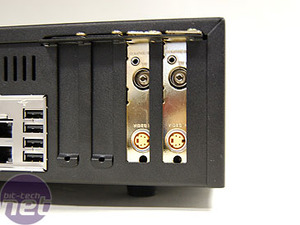







Want to comment? Please log in.